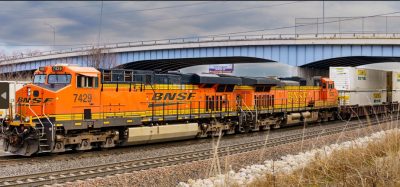ERTMS implementation in Greece
Posted: 28 November 2006 | | No comments yet
Though the Greek Railway Network is located far off Central Europe, ERGOSE S.A.1 is speeding up the efforts to comply with the interoperability requirements set by the European Community to facilitate unhindered, at least by technical barriers, cross-border operations at a European level and to introduce the technological evolutions of the European Railway Traffic Management System (ERTMS) to the Greek Railway Network.
Though the Greek Railway Network is located far off Central Europe, ERGOSE S.A.1 is speeding up the efforts to comply with the interoperability requirements set by the European Community to facilitate unhindered, at least by technical barriers, cross-border operations at a European level and to introduce the technological evolutions of the European Railway Traffic Management System (ERTMS) to the Greek Railway Network.
Though the Greek Railway Network is located far off Central Europe, ERGOSE S.A.1 is speeding up the efforts to comply with the interoperability requirements set by the European Community to facilitate unhindered, at least by technical barriers, cross-border operations at a European level and to introduce the technological evolutions of the European Railway Traffic Management System (ERTMS) to the Greek Railway Network.
The modernisation of the Greek railway main corridor Patra-Athens-Thessaloniki-Idomeni/Promahonas (PATHEP) is essential and will be linked to the main Trans-European Corridors and requires, amongst others, a modern signalling and automatic train protection system, which enhances such railway traffic characteristics as:
- Safety
- Reliability and availability
- Efficient traffic management (with a maximum train operational speed of 200 km/h)
Therefore, most of the Greek railway network (i.e. the track and rolling stock) will require adaptation to fulfil the Directives 2001/16/EC and 2004/50/EC on the interoperability of the Trans-European rail system.
Equally important for the Greek Railway Network is the urgent replacement of the existing obsolete analogue radio communication system (operating on the 170 Mhz frequency spectrum) and the development of the Global System for Mobile Communication for Railways (GSM-R) on a nationwide basis.
Within the frame above, ERGOSE S.A. has recently a call for tender regarding ETCS Level 1 on-board equipment, a call for tender regarding ETCS Level 1 trackside equipment and, in September 2006, signed a Contract with Siemens Hellas S.A. regarding the implementation of a GSM-R system as a result of a tender which was held in December 2005. These three projects are budgeted at approximately ?110 million and will be 50% funded by E.C. and 50% by national funds. The implementation time plan of the three projects is shown in Figure 2.
ETCS Level 1 on-board equipment project
In general, the ETCS Level 1 system to be applied to the Greek Railway Network will consist of the trackside sub-system with the interfaces to the existing signalling systems and of the on-board sub-system with the interfaces to the vehicle systems. It will guarantee that:
- The protected vehicle doesn’t overpass the allowed movement authority (MA)
- The protected vehicle doesn’t overpass the allowed speed profile
The ETCS Level 1 system will be installed on the Greek railway lines taking into account 200 km/h maximum train speed. The aim of this project is to equip the majority of Greek rolling stock with an ETCS on-board system. These vehicles are shown in Figure 3.
The following components of the ETCS on-board sub-system are included in the scope of the tender:
- Kernel (based on the so called European Vital Computer EVC)
- Odometer
- Driver Machine Interface (DMI)
- Train Interface Unit (TIU)
- Juridical Recording Unit (JRU)
Also, within the framework of this project, the following main tasks will be carried out by the Contractor:
- Acquisition of the vehicle data necessary for the optimal implementation of ETCS equipment to each vehicle
- Detailed Design and Implementation Design of the ETCS on-board equipment for each vehicle type
- Supplying and installation of the ETCS on-board equipment
- Test and Commissioning of the complete ETCS system
- Supply of the documentation of the project/equipment and training of the OSE staff
- Warranty and maintenance of the installed system for a two year period
Standards, safety, reliability, availability and interoperability issues
The ETCS on-board sub-system, as well as its basic components has to incorporate current state-of-the-art train control and protection techniques. Therefore, the standards and specifications (UNISIG/EEIG specifications) to be applied in the project will be in the version that is valid on the day of signing the contract, thus providing cross-functionality of equipment of different vendors (on-board – trackside), contingence quite likely to happen in the Greek Railway Network.
The ETCS on-board sub-system shall also fulfil safety requirements of a fail-safe system and therefore all its requirements and activities relating to safety will be derived from the respective European standardisation mainly documented in the standards EN 50126, EN 50128, and prEN 50129. Consequently, the following safety relevant functions (i.e. vital functions) of the ETCS on-board sub-system have been identified and shall fulfil the safety integrity level SIL 4:
- Determination of the permissible train speed
- Transmission of the infrastructure data to the train
- Transmission of the signal aspects to the train
n Determination of the train location based on the trackside and on-board components of the ETCS system
n Brake interface (i.e. fail-safe transmission of the ETCS braking commands to the control system of the train via TIU)
Concerning reliability and availability of the on-board sub-system, this shall comply generally with two standards:
- “Railway Applications – The Specification and Demonstration of Dependability, Reliability, Availability, Maintainability and Safety (RAMS)” of CENELEC
- “ERTMS/ETCS RAMS Requirements Specification Chapter 2 – RAM of UNISIG” (as an informative document only)
The ETCS on-board sub-system will be interoperable in the sense of the European Directives 2001/16/EC and 2004/50/EC and the relevant Technical Specification for interoperability (i.e. TSIs control-command).
The Contractor is obliged to present the EC ‘declaration of conformity of suitability for use’ for ETCS constituents, multiple-use constituents etc, which shall be validated and certified by a notified body (i.e. verification of the interoperability conformity).
The installed ETCS on-board sub-system will be comprehensively tested in order to verify the proper function and safety of each part of it. During testing, the following group of ETCS functions will be examined:
- Basic functions of the ETCS components
- Basic functions of the ETCS system
- Special functions of the ETCS system
- Behaviour of the complete system in case of failure
ETCS Level 1 trackside equipment project
The aim of this project is to equip the main corridor Athens-Thessaloniki-Idomeni/Promahonas with the ETCS Level 1 trackside sub-system which will be designed as an overlay to the existing signalling system, which should not be modified.
Greek Railway Network – existing railway infrastructure
The actual status of the infrastructure of the Greek Railway Network is heterogeneous. Besides the already upgraded sections there remains old section too, while several other modernisation projects are in the realisation phase or are going to be realised soon.
In general, all lines to be equipped with the ETCS Level 1 trackside sub-system have already been or will soon be modernised.
The railway corridor PATHEP (Figure 4) is split into the following main sections. The sections highlighted in red are part of the ETCS Level 1 trackside sub-system project:
Figure 5 shows, in a schematic way, all line sections of the PATHEP corridor. The blue markings represent the lines on which the operational train speed will be 200 km/h for ETCS fitted trains. The red bordered sections represent all lines to be equipped with the ETCS Level 1 trackside sub-system within this project.
The current signalling systems on the sections of line which comprise part of the new project (i.e. red highlighted section) are delivered by two suppliers; Bombardier (former ADtranz, ABB) and Alstom (former SASIB).
In the Greek Railway Network, both relay and computer-based interlocking systems exist. Most of the relay interlocking systems are supplied by Bombardier and are in compliance with British relay interlocking standards. On the Thessaloniki-Idomeni line, relay interlocking systems are supplied by SASIB.
Computer-based Interlocking systems are of the type ASCV (Alstom) and exist on the upgraded line sections Platy-Thessaloniki and Thessaloniki-Promahonas.
On the open line sections between Larissa and Platy, as well as within the TX1 area in Thessaloniki, blocks with 3-aspect block signals for capacity reasons exist. All other open line sections are not equipped with block signals.
Two basic track occupancy detection systems are used in the Greek Railway Network, Axle Counters on the line section Athens-Oinoi and Track Circuits on all other line sections (Onoi-Thessaloniki-Idomeni/Promahonas).
Currently, railway traffic in Greece is controlled by five Traffic Control Centres (TCCs). These are located in the railway stations of Korinthos, Athens, Lianokladi, Larissa and Thessaloniki. The TCC of Athens will soon be moved to the SKA railway complex area after the completion and opening of it.
No national implementation of an Automatic Train Protection System currently exists, therefore, no legacy system burdens the ETCS deployment.
Line sections SKA-Korinthos and SKA-Athens Airport are already equipped with ETCS L1 trackside equipment manufactured by Alstom and Siemens respectively, but have not been put into regular operation yet.
A limited number of Level Crossings exist on the whole network, but on the entire section of the main line Oinoi-Thessaloniki, all remaining Level Crossings are planed to be closed. All Level Crossings on the main line SKA-Oinoi, as well as on the single lines Oinoi-Chalkida, Thessaloniki-Idomeni and Thessaloniki-Promahonas will remain open. On the Thessaloniki-Idomeni/Promahonas lines, all Level Crossings are currently being equipped with new automatic Level Crossing protection systems, supplied by Bombardier.
Scope of the ETCS Level 1 trackside project
According to the primary requirements of the RFQ for the ETCS trackside equipment, the Contractor shall be able to present a technical and operational concept for the ETCS Level 1 trackside sub-system applicable on the Greek Railway Network. The offered system shall fulfil the requirements of the European interoperability regulations and specifications for Conventional Rail and shall operate based on the existing signalling system of Greek Railways.
The proposed solution of the ETCS Level 1 trackside sub-system shall enable an operational speed of up to 200 km/h on the line sections Oinoi-Tithorea and Domokos-Thessaloniki. It shall be considered that the existing signalling system on these line sections is constructed for the maximum operational speed of 160 km/h and should not be modified.
It is expected that the main operational rules of OSE will be applied. The amount of required adaptive changes of the existing signalling system and of the operational rules shall be minimised and proposed by the Contractor only for the case, where no other solution is possible.
The scope of this contract covers all activities necessary for the installation of the ETCS Level 1 sub-system on the concerned lines. In the framework of this contract, the following tasks shall be carried out:
- Investigation of the existing signalling systems from the point of view of optimal implementation and application of ETCS Level 1 trackside sub-system
- Preparation of Detailed Final Design for the installation of the ETCS Level 1 trackside sub-system and all necessary adaptation works, if any
- Supplying and Installation of the ETCS Level 1 trackside equipment on site and connection to the existing signalling system
- Tests on completion of the installed equipment
- Proposal and supplying of spare parts
- Supply of the documentation of the whole project and equipment
- Training of the OSE/ERGOSE staff – operational and technical related
- Maintenance of the installed equipment for two years, starting from the date of Taking Over/Final Acceptance
- Delivering maintenance tools and spare parts
GSM-R project
In September 2006, Siemens Hellas S.A. signed a contract with ERGOSE S.A to deliver, as a complete turn key project, a fully operational GSM-R system for the main lines of the Greek Railway Network, which forms part of the Trans-European Corridors.
Within this context, the backbone railway corridor PATHEP, excluding the sections Patras-Kiato and Tithorea-Domokos, where a new alignment is under design and partly under construction, will be radio covered. The sections Thriassio-Ikonio, Piraeus-SKA (complex)-Airport SPATA and Inoi-Chalkida will also be covered (approximately 800 Km of double or single line).
As the RFQ required a complete turn-key project, the following tasks are included:
- Detailed radio coverage design, and all necessary supportive designs
- Supply of the equipment and software
- Installation, testing, integration and putting into operation
- Technical support for the operation of the system
- Essential spare parts, measurement equipment and special tools
- Training of OSE/ERGOSE staff
- Supply of manuals and system documentation
The solution proposed by Siemens comprises of all the relevant equipment and sub-systems necessary for the full compliance with the requirements of the Tender, as follows:
- Core elements (as MSC/VLR/GCR/?HLR/AC/EIR, Voice/Data recorder, GPRS (GGSN/SGSN))
- Service Platforms (as IN, SMSC, VMS, WAP, CBC, OTA, CCBS)
- BSS elements (as BTSs, TRAU, BSC)
- Runnel coverage systems
- Transmission elements (as SDH optical multiplexers, PDH multiplexers (FMX), MW multiplexers)
- HiPath PABXs and Dispatcher Systems
- On-board equipment
- Handheld units of various type
- Management System for the network elements
GSM-R Network – brief description
The basic topology of the GSM-R network consists of the main Traffic Control Centre (TCC) located in SKA complex, the additional four TCCs located in the main railway stations Korinthos, Larissa, Lianokladi and Thessaloniki and the backbone and access network all over the railway corridor including all mentioned sections.
The core of the GSM-R network will be developed in the SKA main railway complex, where the Network Switching Subsystem (NSS), based on the Siemens EWSD switching technology, will be installed.
The MSC is the main switching centre for the whole traffic generated in the network, with one combined MSC/VLR/GCR/HLR/AC installed. All register functions for mobile networks, like VLR, HLR, EIR, and GCR are realised as software implementations.
The Mobile Switching Centre (MSC) acts as an exchange for GSM-R mobile subscribers. It also connects the other network elements of the GSM-R network with the base station system (BSS) of an MSC service area.
The MSC switching centre is dimensioned for a number of 5,000 subscribers. An upgrade to 10,000 subscribers is possible keeping the same H/W platform and only purchasing the additional remaining 5,000 licences. Connection with ERGOSE, OSE PABX, PSTN and other PLMN is also possible.
The GPRS platform (i.e. GGSN/SGSN/LCG/DNS-DHCP) and WAP will also be incorporated in SKA area.
Service platforms, incorporated also in SKA include IN, SMSC, VMS, CBC, OTA and SIM.
The Siemens IN proposed platform is used in the GSM-R network for the realisation and compliance to the EIRENE (European Integrated Railway radio Enhanced Network) standards.
All vital parts of the NSS sub-system are duplicated for redundancy reasons.
The proposed solution consists also of the BSS sub-system, including 1 TRAU (Transcoder Unit), 2 BSCs (Base Station Controllers) and 100 BTSs (Base Transceiver Stations).
The BSC is the central control entity and provides the interfaces to BTS, TRAU, RC and LMT. All vital parts of the BSC are duplicated in order to ensure fault tolerant operation. The BSC administers the radio resources, maps radio channels to terrestrial network channels and performs handovers among the controlled cells.
The BTSs architecture is a quasi-doubled one with two interleaved BSCs, meaning that every second BTS is connected to the same BSC, for redundancy reasons. Half of the total number of BTSs (namely 50) is therefore connected to each BSC.
The number of 100 BTSs is considered as an output of a preliminary radio coverage planning and the site surveys performed in the pre-tender stage by Siemens service teams to cover the railway axis. The final quantity will be determined according to the results of the final radio coverage study to be conducted after ‘contract signing’.
The proposed system also includes the necessary tunnel coverage sub-systems with leaky feeders and repeaters in order to ensure proper transmission and signal propagation inside tunnels along the railway axis.
In order to transmit all data from the BTS to the centralised BSCs, a transmission system will be deployed, consisting of transport infrastructure including the supply, installation and putting into service of the necessary Fiber Optic Cables and the appropriate SDH transmission system that is required for implementing and supporting the GSM-R network and all of its required features.
A synchronisation network will also be deployed for the proposed transmission system. In cases where needed, there is the possibility to use a microwave solution for the core and access network using SDH and PDH technologies respectively.
A total number of 70 dispatcher terminals are also within the scope of the project; 15 of them in the five main TCCs (three per TCC) and 55 more single placed in several stations where the traffic is considered lower. Voice from the dispatcher terminals is BRI output collected by a PDH multiplexer (FMX) and transformed to E1 (2Mb/s) for the transmission by the SDH multiplexers. All voice is gathered and cross-connected by offered HiPath PABX which in turn is connected to the central switch MSC via PRI interfaces. Data is Ethenet 10/100BT signal connected from the dispatcher terminals directly to SDH multiplexers.
The supply of 120 cab radios to equip a part of OSE trains, 30 General Purpose Handhelds, 30 Operational Purpose Handhelds and 30 Operational Shunting Handhelds is also anticipated.
An Operation and Maintenance Centre will be deployed in SKA for the management of the offered systems i.e. Optical SDH Transport, Telemetry for Network Infrastructure Support Equipment, GSM-R Radio, GSM-R Core and IN. In addition, Element Managers for the VMS/SMS, the Tunnel Repeaters and the Dispatcher System will be present.
An umbrella management system (NMS) able to supervise and unify all individual Element Managers is considered as a future enhancement and investment.
The network architecture can be seen in Figure 7.
References
- ERGOSE S.A.1 is a Subsidiary Company of the Hellenic Railways Organisation (OSE) established in 1996 to undertake the implementation of the Strategic Investment Program for the modernisation of the Greek Railway Network.
- Mr. Protopapas would like to acknowledge the valuable contribution and support of Mr. Bogdan Denjeka, Signalling Consultant of ERGOSE S.A.)
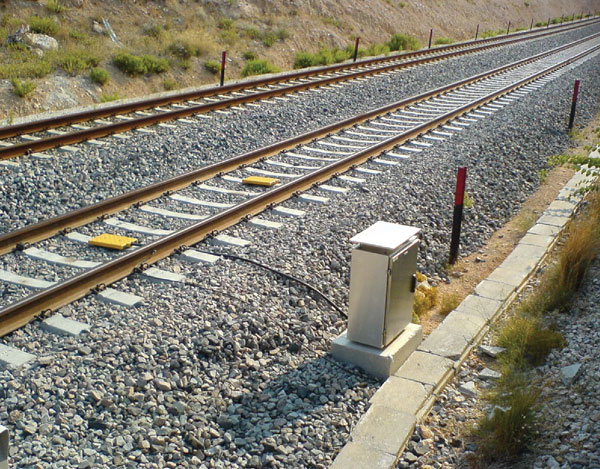

Figure 6b: Existing ETCS trackside installation on Korinth Airport line
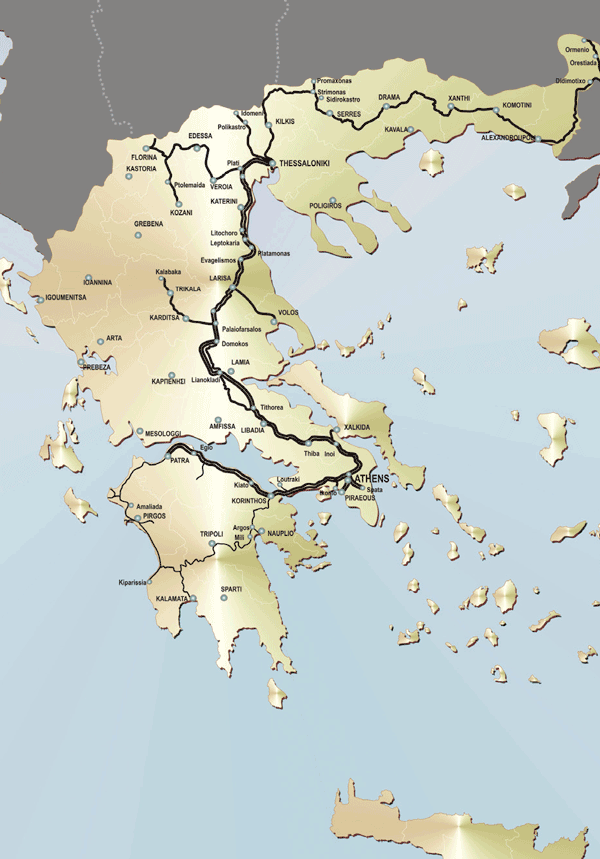

Figure 1: Map of Greek Railway network


Figure 2: ERTMS implementation plan
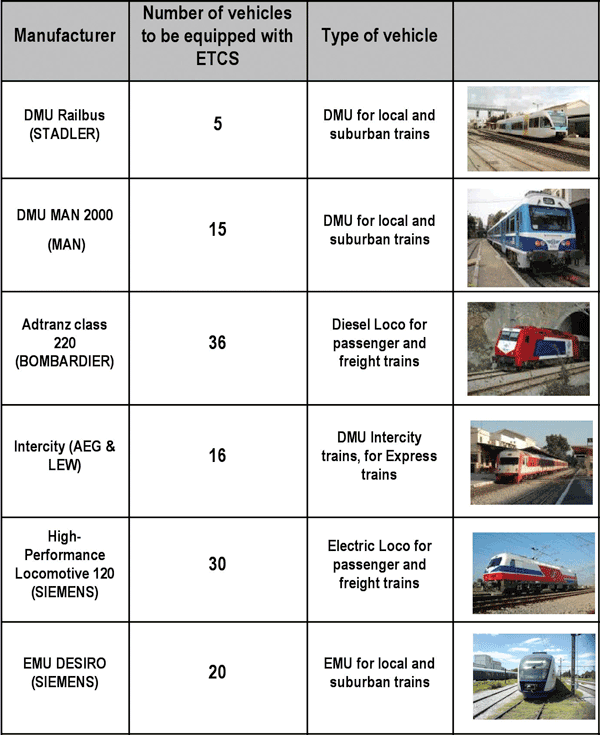

Figure 3: OSE vehicles to be fitted with ETCS on-board equipment


Figure 4: Sections of the PATHEP corridor or the Greek Railways Network
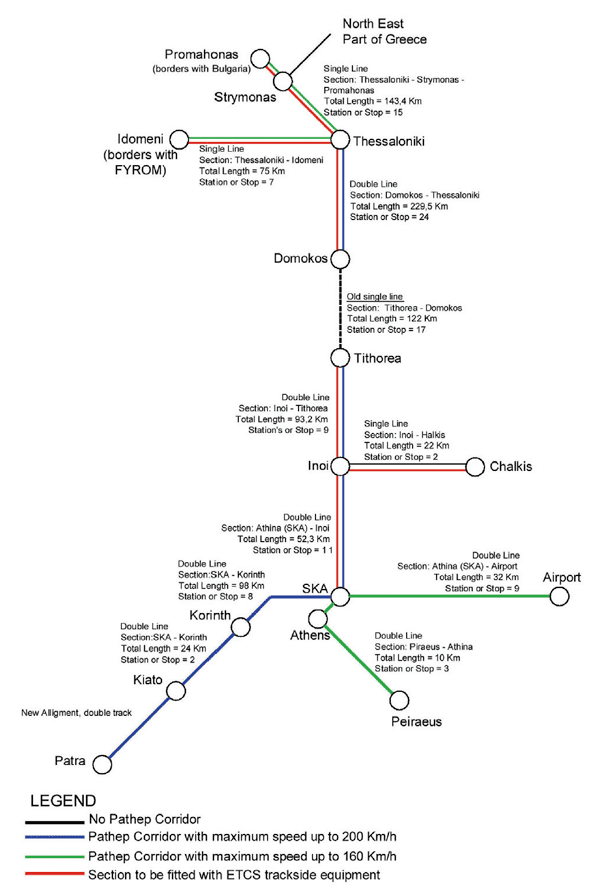

Figure 5: Schematic overview of the PATHEP corridor
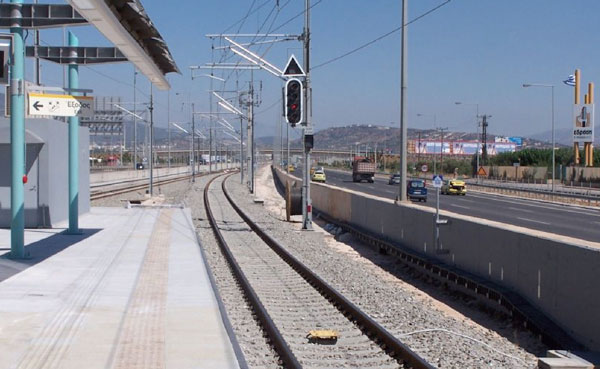

Figure 6a: Existing ETCS trackside installation on Korinth Airport line


Figure 6b: Existing ETCS trackside installation on Korinth Airport line
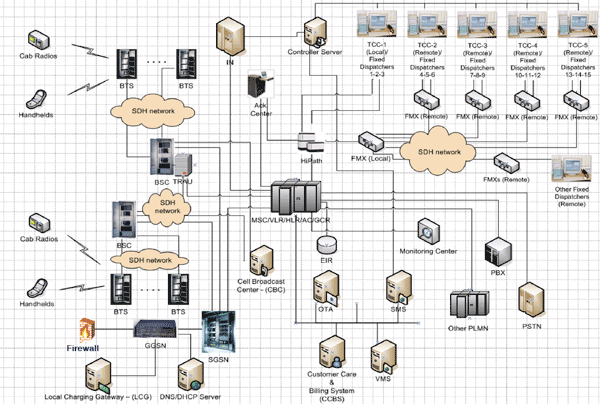

Figure 7: GSM-R network architecture
Issue
Related topics
European Rail Traffic Management System (ERTMS), European Train Control System (ETCS), Global System for Mobile Communications – Railway (GSM-R), High-Speed Rail






